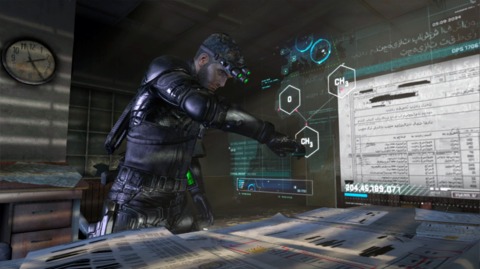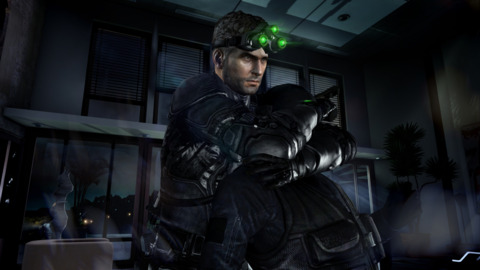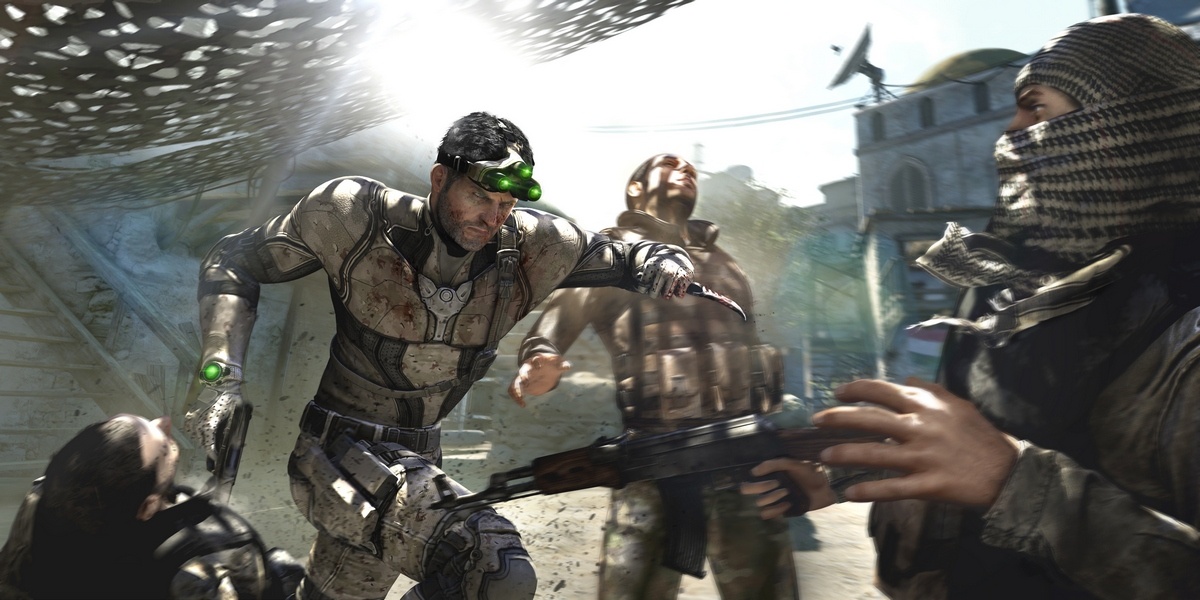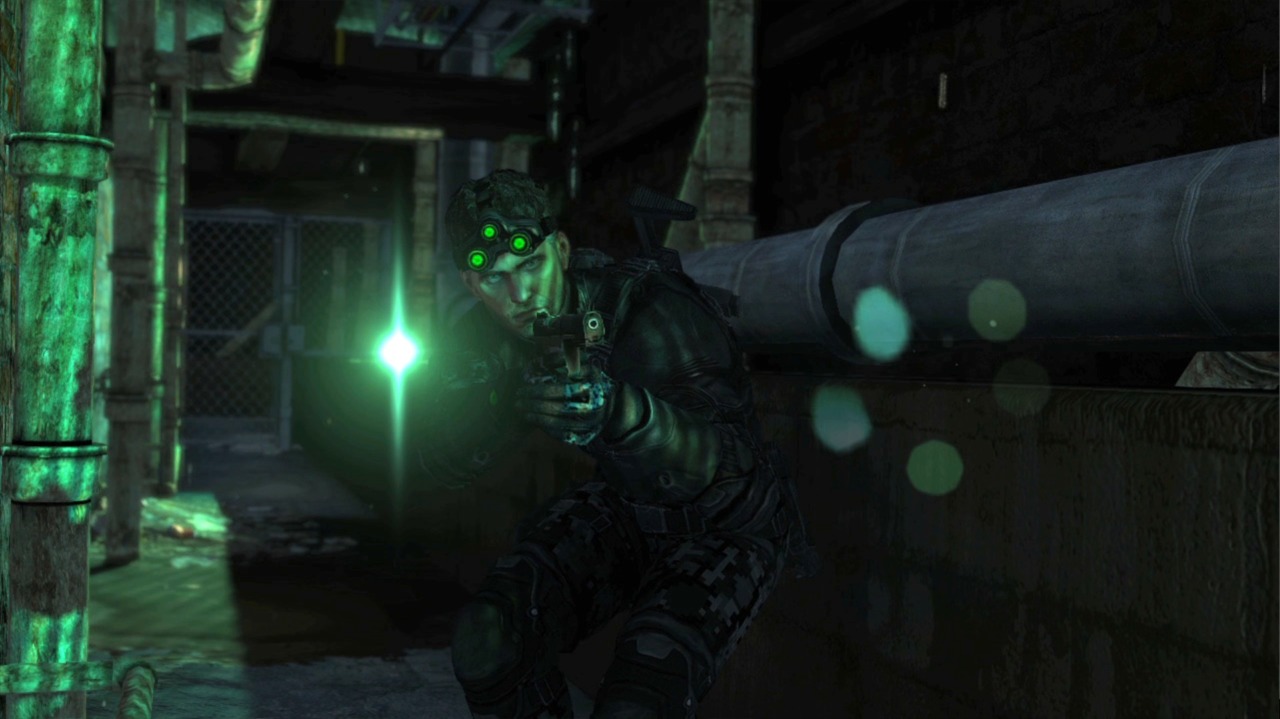Splinter Cell: Blacklist and the Challenges of Stealth
Ubisoft Toronto's Patrick Redding explores the challenges of developing a modern stealth game, and how the next Splinter Cell aims to surmount them.
Sam Fisher is a busy man. Ever since his debut back in 2002, this supersoldier has seen his series oscillate between strict stealth and dynamic action. Part of this shift in focus stems from the inherent challenges of the stealth genre and the tolerance of an ever-expanding target audience. Patrick Redding, game director at Ubisoft Toronto, explains how he and his team have approached these challenges, and what changes are coming in Tom Clancy's Splinter Cell: Blacklist.
STAR WARS: Prequel Pack - Official Reveal Trailer DEAD OR ALIVE Xtreme Venus Vacation PRISM - Official 2nd Trailer Phantom Blade Zero - 6 Minute "Year of the Snake" Gameplay Trailer The Hundred Line -Last Defense Academy-: Character Trailer 1 Black Ops 6 & Warzone - Official Season 02 Launch Trailer GUILTY GEAR STRIVE: DUAL RULERS - Official Main Trailer Marvel Rivals | The Spring Festival Trailer Kingdom Come: Deliverance 2 Roadmap Trailer Zenless Zone Zero - Astra Yao Character Demo | "Ridu Holidays" BlazBlue Entropy Effect - Hazama Character DLC Gameplay Reveal Trailer Helskate Launch Trailer Code Violet | Announcement Trailer
Please enter your date of birth to view this video
By clicking 'enter', you agree to GameSpot's
Terms of Use and Privacy Policy
CHALLENGE ONE: SATISFACTION
What is so satisfying about stealth? Some might think it's slipping past guards and moving unseen. However, as Redding sees it, this is just a result and not the cause. "Stealth--from a level design perspective--is not about avoidance. Instead, it's about building an ecosystem, and [that ecosystem] needs to feel like it has an existence outside of what the player is doing. That's why having a really [dynamic] AI is so important." Having an AI that acts human can make a level feel alive and introduce that bit of randomness that keeps you on your toes.
"Part of the dynamic of stealth games is that you're holding that power of life and death over the NPCs, but electing not to do anything with it."--Redding, on stealth"When you arrive in a new environment you start out in stealth by default. You haven't been detected, yet, and even if the first thing you do is pull the pin on a grenade and throw it, you are still dealing with the current state of that environment. The output of your action is going to have a different impact on the [ecosystem] in that moment than in another."
For Redding and his team, choice trumps avoidance in the scenarios they create. "There's a lot of depth in using gadgets in combination, understanding how sound will attract the AI, knowing where to hide bodies, and so on. By giving all these tools to the player, and offering multiple paths in the environment, you're reinforcing that they have the ultimate choice in how this is going to play out."
"At the same time, you don't want conditions to be so fragile or so volatile that the player feels like they have no idea what's going to happen when they push a button or pull a trigger," Redding says. "For the player, the challenge is surveying the situation, observing the AI, and then putting together a plan. The fun is then executing that plan and seeing whether it plays out exactly how you thought, went a little differently, or having it all go wrong and needing to [escape]. That's what's satisfying for stealth players."
CHALLENGE TWO: DEATH AND FAILURE
Death is a tricky design for games. It challenges you by using the threat of failure, but if overdone, that threat will leave you too cautious to try anything new. As Redding describes it, finding the right balance has always been a moving target for the Splinter Cell franchise. "If you look at the original Splinter Cell, that threshold was set very, very tightly. If you made a mistake, you either died or the mission was aborted. With every subsequent entry in this series, that threshold has been made a little more forgiving to permit the player more options and prevent there being just one solution to a situation."
"By the time we got to Tom Clancy's Splinter Cell: Conviction, we introduced this game loop called "PEV," or "prepare, execute, vanish." You would get into position, observe, and plan, and then act on that plan. And you always had the ability to break line of sight with the AI, who would then converge on your last known location. Of course, you could use that knowledge to set up a trap for them. PEV was our way of saying even if things go wrong and you get into a combat situation, that shouldn't be the end. [Combat] should just be the transition into another stealth experience."
With Blacklist, the team wanted to preserve those transitions between stealth and combat, while simultaneously tweaking the failure threshold once again. "What we've done is we've made it much, much harder to survive in an open firefight," Redding says. "Enemies now are [significantly] more dangerous, providing a much stronger incentive to remain stealthy." The hope is that you will adopt a panther style of play: picking off individual enemies while skirting around the threat of detection.
"The fluidity of Sam's movements has been improved to help encourage this panther style," Redding adds. "We really want it to feel like Sam is always multiple steps ahead of the enemy, which helps make the player feel more elite. When things go wrong, and you save the day, and you then disappear into the darkness leaving nothing but a trail of bodies in your wake--that, for us, is the game at its most fun. In our perfect world, we hope that everyone has the chance to pull that off."


CHALLENGE THREE: MASS APPEAL
Tolerance, specifically player tolerance, is yet another moving target for this series. As the desired audience for Splinter Cell games grows, the team must constantly question how much of the traditional, methodical stealth action an average player will tolerate. As Redding explains, "For us, we look at Splinter Cell and we look at the marketplace, and the challenge becomes, 'Can we make a stealth game that is going to appeal to a mass-market group of players?'"
"We owe a lot to the fact that, in the independent games scene, there has been a lot of willingness to experiment with new ideas in stealth."--Redding, on design"We've circled that [problem] a few different ways. When we got to Conviction, we tried a slight variation on our stealth design. We thought maybe the stealth needed to be faster and offer the player more chances to be aggressive and dynamic in the environment."
Before the release of Blacklist, such games as Dishonored and Mark of the Ninja revealed that asking the average player to play in a stealthy way wasn't such a tall order. "We didn't have to be as dogmatic about [the speed] because we realized from a lot of other games…that playing in a stealthy way can be immensely satisfying for the player as long as it's readable and the player doesn't feel like they have to spend hours watching AI walk patterns."
Readability is the difference between making you feel like a silent predator lurking in the night and making you feel like just some dude squatting in the shadows. That sense of empowerment can push you to be a little more patient, within reason. "As long as it can be done in a reasonable amount of time, asking the player to engage in observation and planning is totally acceptable. That was a very interesting lesson in understanding what the tolerances are for typical players that we needed to learn."
Over the years, Redding and his team have encountered players of all varieties. "There will always be players who are willing to be extremely deliberate and will monitor one guard for a very long time. However, just because other players aren't willing to go to that extreme doesn't mean they won't engage in some observation." This tolerance has encouraged the team to tap into more of the series' classic moments--where the challenges (and the consequences) are stricter--if only for a moment.
"If you tell the player, 'In this area, these are the types of rules you have to follow--go!' a lot of players really enjoy that. There are some players who love being told what to do, and others who love having choice, so we have to treat [our game] as a kind of buffet. There are these hors d'oeuvre moments where we give the player some very rigid constraints and maybe open their mind to another style of play without forcing them to do it everywhere or for half-hour stretches."
'
Got a news tip or want to contact us directly? Email news@gamespot.com


Join the conversation